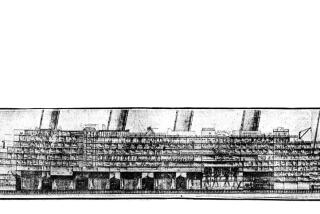The secret to perfect compost? Experts weigh in
In the spirit of holiday giving (and in an effort to plump our holiday gift guides), we asked five gardening experts to name their favorite composters. We expected recommendations on fancy tumblers and exotic bins, but their answers surprised us:
Dale Newman, Dale Newman Design, Santa Monica: “I take all of my kitchen scraps — fruit, vegetables, coffee grinds, tea bags and paper towels — and put them directly in the ground. I use a cheap black plastic 5- or 15-gallon bucket from the nursery, cut out the bottom and place it in a big hole in the ground. A saucer on top keeps the rodents out. I also add plants from the garden, but not weeds because the temperature will not get high enough to kill them. When the compost gets to surface level, I cap it with about 6 inches of soil and then pull the tub out. You can then dig a new hole and start over in another location that needs amending. Composting directly in the ground encourages worms by attracting them to the food.”
Kathleen Ferguson, Kathleen Ferguson Landscapes, Los Angeles: “At home, we’ve had the most success with the worm composter from the Worm Factory. We place it right outside our kitchen on our deck. My two kids love it.”
Elizabeth Low, Elow Landscape Design and Build, Mar Vista: “I wasn’t crazy about the tumbler from Gardener’s Supply because it was producing way too much compost. I had enough compost for my entire neighborhood. Patty Lee at F.K. Nursery in West L.A. told me to use sardines and raw eggshells to grow vegetables instead of compost. Dig about 10 inches down and plant six sardines under each plant and then put soil on top so it doesn’t attract raccoons. It works great. This year we had our best tomatoes yet.”
Christy Wilhelmi, Gardenerd, Los Angeles: “The bin that I love is the Biostack from Smith & Hawken [no longer in production]. It’s basically three frames that stack on top of each other with a lid. It makes turning the pile easier. You’re not turning a huge bin; it’s simple and straightforward. The more you turn a pile, the more you are exposing it to bacteria and fungi so there are new surfaces for it to break down faster. The city of Los Angeles used to sell them for $45, but now they just sell the Earth Machine, which is a fine machine too. Some people like to put their food scraps in the freezer and then later purée them and bury them in the ground.” [Go to the Los Angeles Bureau of Sanitation’s Backyard Composting page to see the Earth Machine and a calendar of composter sale events.]
John Lyons, the Woven Garden: “What I encourage people to do if they don’t want to compost is to dig a trench and put the raw materials in the trench and cover it with soil. You can really amend stubborn soil that way. It decomposes very quickly. There’s a very good book on composting by Rodale, ‘The Rodale Book of Composting.’ The only secret to composting is to get the carbon to nitrogen correct and keep the pile moist but not wet.”
Do you have a favorite bin, tumbler or composting tip you’d like to share? Send them to us at home@latimes.com and we’ll post the results here later.
For an easy way to follow the L.A. scene, bookmark L.A. at Home and join us on Facebook, Twitter and Pinterest.





